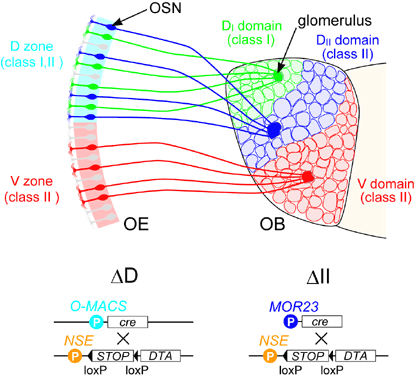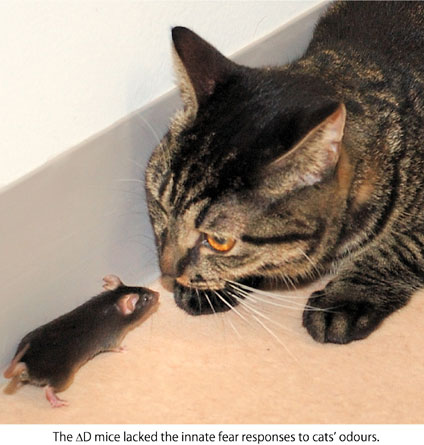Functional modularization in the odor maps of the olfactory bulb
Odor maps in the mammalian olfactory bulb contain zonal and domain organization, but their functional significance is not known yet. Kobayakawa et al. in Sakano’s lab generated mutant mice in which olfactory sensory neurons in a specific area of the olfactory epithelium are ablated by targeted expression of diphtheria toxin gene. In the dorsal-zone-depleted mice, the dorsal domain of the olfactory bulb was devoid of glomerular structures. Mapping the glomeruli activated by spoiled food odors or predator odors (in collaboration with Mori’s lab) as well as the examination of behavioral responses to these odors indicated that innate fear responses to a predator odor is mediated by specific glomeruli in dorsal-zone class-II-domain, while aversive responses to spoiled food odors by dorsal-zone class-I-domain. The finding of the functional modularization in the olfactory bulb predicts that distinct domains in the bulb give rise to distinct parallel streams of olfactory information processing in the central olfactory system, each stream being related to distinct behavioral responses.
Program members (collaborative work)
Hitoshi Sakano (Department of Biophysics and Biochemistry, Graduate School of Science)
Kensaku Mori (Department of Functional Biology, Graduate School of Medicine)


